Gamecock Fanatics
You are using an out of date browser. It may not display this or other websites correctly.
You should upgrade or use an alternative browser.
You should upgrade or use an alternative browser.
Countdown to Kickoff
- Thread starter Swayin
- Start date
Homebrewcock
GCF Top Poster
Homebrewcock
GCF Top Poster
U.S. Navy Task Force 67 suffered heavy losses in the crucial naval battles of the Guadalcanal campaign during WWII.

Task Force 67 would later be reconstituted for the remainder of the Solomon Islands campaign under two different commanders.
Here's another link that just speaks about some of TF 67's destroyers.
TF 67 would participate in the infamous First Naval Battle of Guadalcanal. Callaghan's strategy was take his grossly outmatched smaller cruisers and destroyers to point blank range to assure penetration of his shells into the armor of the two much larger Japanese battleships Hiei and Kirishima his force was up against. This strategy resulted in Hiei being sunk, but both Rear Admirals Callaghan and Scott would die in the battle.In early November 1942, Allied intelligence learned that the Japanese were preparing again to try to retake Henderson Field.Therefore, the U.S. sent Task Force 67 (TF 67)—a large reinforcement and re-supply convoy, split into two groups and commanded by Rear Admiral Richmond K. Turner—to Guadalcanal on 11 November. The supply ships were protected by two task groups—commanded by Rear Admirals Daniel J. Callaghan and Norman Scott—and aircraft from Henderson Field on Guadalcanal.

https://en.wikipedia.org/wiki/Naval_Battle_of_GuadalcanalCallaghan prepared his force to meet the Japanese that night in the sound. His force consisted of two heavy cruisers (San Francisco and Portland), three light cruisers (Helena, Juneau, and Atlanta), and eight destroyers: Cushing, Laffey, Sterett, O'Bannon, Aaron Ward, Barton, Monssen, and Fletcher. Admiral Callaghan commanded from San Francisco.
Ira Wolfert, an American war correspondent, was with the Marines on shore and wrote of the engagement:
"The action was illuminated in brief, blinding flashes by Jap searchlights which were shot out as soon as they were turned on, by muzzle flashes from big guns, by fantastic streams of tracers, and by huge orange-colored explosions as two Jap destroyers and one of our destroyers blew up... From the beach it resembled a door to hell opening and closing ... over and over."
After nearly 40 minutes of brutal, close-quarters fighting, the two sides broke contact and ceased fire at 02:26, after Abe and Captain Gilbert Hoover (the captain of Helena and senior surviving U.S. officer) ordered their respective forces to disengage. Abe had one battleship (Kirishima), one light cruiser (Nagara), and four destroyers (Asagumo, Teruzuki, Yukikaze, and Harusame) with only light damage and four destroyers (Inazuma, Ikazuchi, Murasame, and Samidare) with moderate damage. The U.S. had only one light cruiser (Helena) and one destroyer (Fletcher) that were still capable of effective resistance. Although perhaps unclear to Abe, the way was now open for him to bombard Henderson Field and finish off the U.S. naval forces in the area, thus allowing the troops and supplies to be landed safely on Guadalcanal.
At this crucial juncture, Abe chose to abandon the mission and depart the area. Several reasons are conjectured as to why he made this decision. Much of the special bombardment ammunition had been expended in the battle. If the bombardment failed to destroy the airfield, then his warships would be vulnerable to CAF air attack at dawn. His own injuries and the deaths of some of his staff from battle action may have affected Abe's judgement. Perhaps he was also unsure as to how many of his or the U.S. ships were still combat-capable because of communication problems with the damaged Hiei. Furthermore, his own ships were scattered and would have taken some time to reassemble for a coordinated resumption of the mission to attack Henderson Field and the remnants of the U.S. warship force. For whatever reason, Abe called for a disengagement and general retreat of his warships, although Yukikaze and Teruzuki remained behind to assist Hiei. Samidare picked up survivors from Yūdachi at 03:00 before joining the other Japanese ships in the retirement northwards.
Including the sinking of Juneau, total U.S. losses in the battle were 1,439 dead. The Japanese suffered between 550 and 800 dead.
Task Force 67 would later be reconstituted for the remainder of the Solomon Islands campaign under two different commanders.
https://en.wikipedia.org/wiki/Task_Force_67Task Force 67 was created by William Halsey, Jr. during Guadalcanal Campaign of World War II and consisted of several destroyers and cruisers:
Fletcher
Nicholas
O'Bannon
Strong
De Haven
Nashville
Helena
St. Louis
Minneapolis
New Orleans
Pensacola
Northampton
Honolulu
Drayton
Maury
Perkins
Lamson
Lardner
Battles
Battle of Tassafaronga
Battle of Munda Point
Command
RADM Carleton H. Wright upon creation
RADM Walden L. Ainsworth after the Battle of Tassafaronga
Here's another link that just speaks about some of TF 67's destroyers.
https://military.wikia.org/wiki/Task_Force_67Task force 67 or Cactus Strike force was based at Guadalcanal during World War II and consisted of several destroyers: Fletcher, Nicholas, O'Bannon, Strong and De Haven. They defended the waters off Guadalcanal from the Tokyo Express. These were some of the most contested waters in the early days of World War II. The ships were in constant action and suffered heavy losses.
Two surviving destroyers became the most decorated ships in the U.S. Navy; Nicholas won 30 battle stars in three wars, and O'Bannon with 17 battle stars in just World War II.
It became Task Force 18 in April 1943.
Task Force 67 became part of the United States Sixth Fleet in the Mediterranean Sea after the Second World War.
Last edited by a moderator:
USS Cole, DDG-67.
_turn.jpg/1280px-USS_Cole_(DDG-67)_turn.jpg)

https://en.wikipedia.org/wiki/Darrell_S._Cole
_turn.jpg/1280px-USS_Cole_(DDG-67)_turn.jpg)
https://en.wikipedia.org/wiki/USS_Cole_(DDG-67)USS Cole (DDG-67) is an Arleigh Burke-class Aegis-equipped guided missile destroyer home-ported in Naval Station Norfolk, Virginia. Cole is named in honor of Marine Sergeant Darrell S. Cole, a machine-gunner killed in action on Iwo Jima on 19 February 1945, during World War II.
On 12 October 2000, Cole was bombed in a suicide attack carried out by the terrorist organization al-Qaeda in the Yemeni port of Aden, killing 17 sailors, injuring 39 others, and damaging the ship. On 29 November 2003, Cole engaged in her first overseas deployment after the bombing and subsequently returned to her home port of Norfolk, Virginia, on 27 May 2004 without incident.
Sergeant Darrell Samuel Cole (July 20, 1920 – February 19, 1945) was a United States Marine who posthumously received the United States' highest military decoration, the Medal of Honor, for his conspicuous gallantry at the Battle of Iwo Jima during World War II.
Early life
Darrell Cole was born July 20, 1920 in Esther (now part of Park Hills), Missouri. He attended high school in Esther, graduating in 1938. Before graduating, his main interests were sports; particularly basketball, hunting and photography. He also learned to play the French horn which later led to him being assigned as a bugler.
After graduating from high school, he joined the Civilian Conservation Corps (CCC), where he became an assistant forestry clerk and assistant educational advisor for his company. He left after one year and he went to Detroit, Michigan where he worked at a company that made engine gaskets.
Although he was originally assigned to play the bugle, Sergeant Cole repeatedly requested that his rating be changed from field musician to machine-gunner. Although rated as a bugler he fought as a machine-gunner in several major campaigns of World War II including Guadalcanal, Tinian, and Saipan.
On his fourth request to change his rating to machine-gunner the request was approved 4 months before he was sent into combat again on Iwo Jima. During the battle, Cole made a successful one-man attack against two gun emplacements impeding the advance of his company. Upon returning to his squad, he was killed by an enemy grenade.

https://en.wikipedia.org/wiki/Darrell_S._Cole
Last edited by a moderator:
USS Solomons, CVE-67.
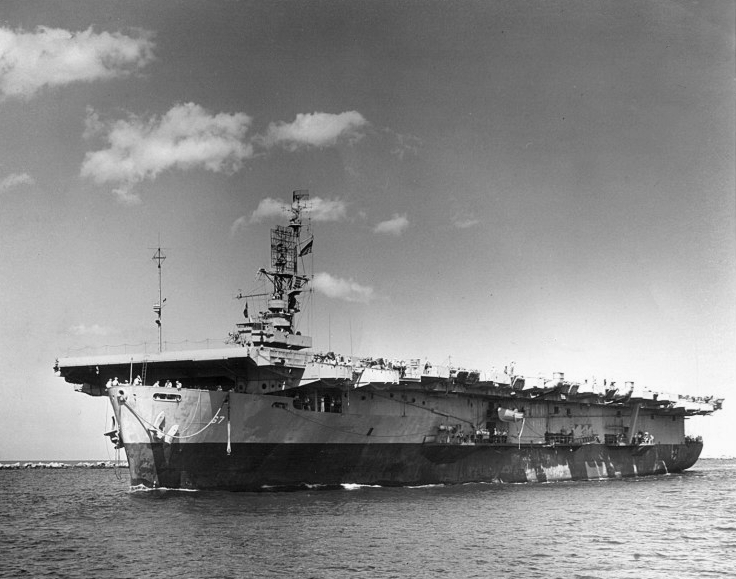

https://en.wikipedia.org/wiki/USS_Solomons_(CVE-67)Loaded with planes, supplies, and aviation stores, Solomons got underway on 21 March bound for Brazil, arrived at Recife on 13 April, and reported for duty with the 4th Fleet. On the next day, she got underway for her first antisubmarine patrol. This cruise, which lasted until 30 March, and the next, from 4–20 May, proved uneventful.
Departing Recife in June 1944, Solomons was soon involved in her sole U-boat engagement of the war. On 15 June, one of Solomons' pilots reported contact with an enemy submarine some 50 miles from the carrier. Straub and Herzog were immediately directed to the position of the contact. The pilot who had made the initial contact on the submarine was shot down by enemy anti-aircraft fire, but at 1654, another Solomons aircraft regained visual contact. Five other Solomons aircraft soon joined up with it, and the group commenced a series of rocket and depth charge attacks, which resulted in sinking the submarine, although with the loss of another pilot. Straub succeeded in rescuing 20 survivors, including the commanding officer. Solomons continued anti-submarine air operations until 23 June, when she returned to Recife to refuel and disembark the captured German sailors.
30 battle starsU.S. Navy Task Force 67 suffered heavy losses in the crucial naval battles of the Guadalcanal campaign during WWII.
TF 67 would participate in the infamous First Naval Battle of Guadalcanal. Callaghan's strategy was take his grossly outmatched smaller cruisers and destroyers to point blank range to assure penetration of his shells into the armor of the two much larger Japanese battleships Hiei and Kirishima his force was up against. This strategy resulted in Hiei being sunk, but both Rear Admirals Callaghan and Scott would die in the battle.
https://en.wikipedia.org/wiki/Naval_Battle_of_Guadalcanal
Task Force 67 would later be reconstituted for the remainder of the Solomon Islands campaign under two different commanders.
https://en.wikipedia.org/wiki/Task_Force_67
Here's another link that just speaks about some of TF 67's destroyers.
https://military.wikia.org/wiki/Task_Force_67
 !! holy cow.
!! holy cow.USS Springfield, CL-66, later CLG-7.
On 27 May 1945, the 5th Fleet was redesignated the 3rd Fleet when Admiral Halsey relieved Admiral Spruance. Three days later, Springfield anchored in San Pedro Bay at Leyte in the Philippines for maintenance and upkeep. One month later, she departed Leyte and joined TF 38 for further air strikes against the Japanese home islands. On 10 and 11 July, the carriers launched planes against Tokyo. On the 13th and 14th, their targets were northern Honshū and Hokkaidō. The task force conducted an anti-shipping sweep along the coast of Honshū on the night of 14/15 July, and then, two days later, returned to hit Tokyo and Yokohama again. The planes bombed battleships Nagato and Haruna, on 18 July; then pounded Kobe and Kure on 24, 25, and 28 July. Springfield joined in a bombardment again on the night of 24/25 July; this time the targets were shore installations on southern Honshū. On 30 July, Tokyo once more suffered from the wrath of the flattops. Sweeping the coast of Honshū for enemy ships as they went, TF 38 returned to bomb northern Honshū and Hokkaido on 9 and 10 August. Three days later, the carriers sent their planes against Tokyo for the last raid of the war—on the 15th, hostilities in the Pacific ended.
_fires_her_guns,_in_1947-1948_(80-G-706316).jpg)
On 27 May 1945, the 5th Fleet was redesignated the 3rd Fleet when Admiral Halsey relieved Admiral Spruance. Three days later, Springfield anchored in San Pedro Bay at Leyte in the Philippines for maintenance and upkeep. One month later, she departed Leyte and joined TF 38 for further air strikes against the Japanese home islands. On 10 and 11 July, the carriers launched planes against Tokyo. On the 13th and 14th, their targets were northern Honshū and Hokkaidō. The task force conducted an anti-shipping sweep along the coast of Honshū on the night of 14/15 July, and then, two days later, returned to hit Tokyo and Yokohama again. The planes bombed battleships Nagato and Haruna, on 18 July; then pounded Kobe and Kure on 24, 25, and 28 July. Springfield joined in a bombardment again on the night of 24/25 July; this time the targets were shore installations on southern Honshū. On 30 July, Tokyo once more suffered from the wrath of the flattops. Sweeping the coast of Honshū for enemy ships as they went, TF 38 returned to bomb northern Honshū and Hokkaido on 9 and 10 August. Three days later, the carriers sent their planes against Tokyo for the last raid of the war—on the 15th, hostilities in the Pacific ended.
_fires_her_guns,_in_1947-1948_(80-G-706316).jpg)
USS Allen, DD-66.
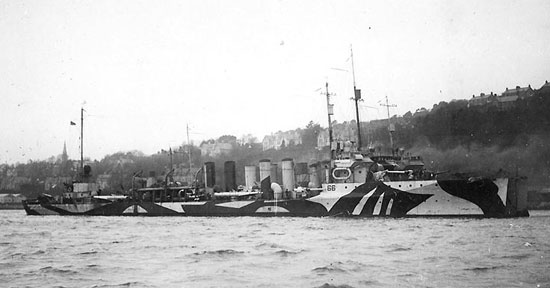

USS White Plains, CVE-66.
_at_San_Diego,_8_March_1944.jpg)
_on_25_October_1944_(80-G-288882).jpg/1280px-Kamikaze_attacks_USS_White_Plains_(CVE-66)_on_25_October_1944_(80-G-288882).jpg)
https://en.wikipedia.org/wiki/USS_White_Plains_(CVE-66)
_at_San_Diego,_8_March_1944.jpg)
A diving Kamikaze fighter narrowly misses White Plains following the Battle off Samar.Battle off Samar
Yamato opened fire at 0659 at an estimated range of 34,544 yards, targeting White Plains with her first four salvoes. Yamato's third salvo was a close straddle landing at 07:04. One shell from this salvo exploded beneath the turn of White Plains port bilge near frame 142, near her aft (starboard) engine room. While the ship was not struck directly, the mining effect of the under-keel explosion severely damaged her hull, deranged her starboard machinery and tripped all of the circuit breakers in her electrical network. Prompt and effective damage control restored power and communications within three minutes and she was able to remain in formation by over-speeding her port engine to compensate. The black smoke resulting from the sudden loss of boiler intake air pressure convinced Yamato and Nagato (which was also firing her main battery at White Plains at the time) that they had scored a direct hit and they shifted fire to other targets. For the next two and one-half hours, the Japanese force chased "Taffy 3" southward and subjected the escort carriers and their counterattacking screen to a heavy-caliber cannonade. The aircraft carriers' warplanes fought back, even making dummy runs on the Japanese ships to slow the ships' speed of advance after expending all their bombs, torpedoes, and ammunition. During their counterattacks, USS Johnston, Hoel, and Samuel B. Roberts were sunk by gunfire. Later, USS Gambier Bay was sunk by gunfire as well, while USS Fanshaw Bay, USS Kalinin Bay, Dennis, and Heermann suffered heavy damage.
During the surface phase of the action White Plains' 5-inch gun crew claimed six hits on heavy cruiser Chōkai. It was initially believed that one of these hits caused the Chokai's Type 93 "Long Lance" torpedoes to explode, crippling Chōkai and making it vulnerable to air attack. However, the 2019 discovery by the RV Petrel of the wreck of the Chōkai with her torpedoes intact disproved this theory. Chōkai was later sunk by planes from Ommaney Bay (CVE-79), an escort carrier of Taffy 2. Haguro's detailed action report states that Chokai's immobilizing damage resulted from a bomb hit at 0851.
The Japanese surface force broke off its pursuit from 0912–0917 hours, and after milling around in apparent confusion for a time, retired northward to San Bernardino Strait. The retreat by Kurita's surface force, however, did not end the ordeal for White Plains and her fellow warships. After a 90-minute respite, they suffered harassment from a different quarter. At 1050 hours, a formation of nine Japanese Navy Zeke fighters appeared and began simultaneous kamikaze attacks. Two of them singled out White Plains as their victim. Her antiaircraft gunners responded, hitting one of the intruders, which immediately changed course and crashed into USS St. Lo, which eventually sank. The other aircraft continued on toward White Plains, but her antiaircraft guns finally brought him down yards astern, scattering debris all over the ship's deck and sides, but causing only 11 relatively minor casualties.
_on_25_October_1944_(80-G-288882).jpg/1280px-Kamikaze_attacks_USS_White_Plains_(CVE-66)_on_25_October_1944_(80-G-288882).jpg)
https://en.wikipedia.org/wiki/USS_White_Plains_(CVE-66)
Last edited by a moderator:
USS Hue City, CG-66.
.jpg/1920px-USS_Hue_City_is_conducting_routine_training_and_operations_in_preparation_for_an_upcoming_deployment._(29793903210).jpg)
.jpg/1920px-USS_Hue_City_is_conducting_routine_training_and_operations_in_preparation_for_an_upcoming_deployment._(29793903210).jpg)
https://en.wikipedia.org/wiki/USS_Hué_CityUSS Hué City (CG-66) is a Ticonderoga-class guided missile cruiser serving in the United States Navy. She is named for the Battle of Huế, fought in the city during the Tet Offensive of 1968 by the 1st Marine Regiment (composed of 1st Battalion, 1st Marines, 1st Battalion, 5th Marines, 2nd Battalion, 5th Marines and attached units) during the Vietnam War. The three battalion commanders were the honored guests at her 1991 commissioning.
Hué City is the only U.S. Navy ship named after a battle in the Vietnam War, although it had been planned to name LHA-5 as USS Khe Sanh after the Battle of Khe Sanh, but that ship was commissioned in 1976 as Peleliu. As the only U.S. warship named for a battle that took place during the Vietnam War, Hué City has had the opportunity to reach out to the veterans of the battle for which she is named. She has done so frequently by holding a memorial for the Battle of Hué annually every year the ship's schedule permits. The memorial has served as a great opportunity for veterans to re-unite, meet the crew, and honor their fallen comrades.
USS Gonzalez, DDG-66.
_arrives_in_Souda_harbor.jpg/1280px-Destroyer_USS_Gonzalez_(DDG_66)_arrives_in_Souda_harbor.jpg)

https://en.wikipedia.org/wiki/Alfredo_Cantu_Gonzalez
_arrives_in_Souda_harbor.jpg/1280px-Destroyer_USS_Gonzalez_(DDG_66)_arrives_in_Souda_harbor.jpg)
https://en.wikipedia.org/wiki/USS_GonzalezUSS Gonzalez (DDG-66) is an Arleigh Burke-class destroyer in the United States Navy. She is named for Sergeant Alfredo Cantu Gonzalez, a Medal of Honor recipient in the Vietnam War.
Medal of Honor citation
Rank and organization: Sergeant, U.S. Marine Corps, Company A, 1st Battalion, 1st Marines, 1st Marine Division (Rein), FMF.
Place and date: Near Thua Thien, Republic of Vietnam, 4 February 1968.
Entered service at: San Antonio, Tex. Born: 23 May 1946, Edinburg Tex.
Citation:
For conspicuous gallantry and intrepidity at the risk of his life above and beyond the call of duty while serving as platoon commander, 3d Platoon, Company A. On 31 January 1968, during the initial phase of Operation Hue City, Sgt. Gonzalez' unit was formed as a reaction force and deployed to Hue to relieve the pressure on the beleaguered city. While moving by truck convoy along Route No. 1, near the village of Lang Van Lrong, the Marines received a heavy volume of enemy fire. Sgt. Gonzalez aggressively maneuvered the Marines in his platoon, and directed their fire until the area was cleared of snipers. Immediately after crossing a river south of Hue, the column was again hit by intense enemy fire. One of the Marines on top of a tank was wounded and fell to the ground in an exposed position. With complete disregard for his safety, Sgt. Gonzalez ran through the fire-swept area to the assistance of his injured comrade. He lifted him up and though receiving fragmentation wounds during the rescue, he carried the wounded Marine to a covered position for treatment. Due to the increased volume and accuracy of enemy fire from a fortified machine gun bunker on the side of the road, the company was temporarily halted. Realizing the gravity of the situation, Sgt. Gonzalez exposed himself to the enemy fire and moved his platoon along the east side of a bordering rice paddy to a dike directly across from the bunker. Though fully aware of the danger involved, he moved to the fire-swept road and destroyed the hostile position with hand grenades. Although seriously wounded again on 3 February, he steadfastly refused medical treatment and continued to supervise his men and lead the attack. On 4 February, the enemy had again pinned the company down, inflicting heavy casualties with automatic weapons and rocket fire. Sgt. Gonzalez, utilizing a number of light antitank assault weapons, fearlessly moved from position to position firing numerous rounds at the heavily fortified enemy emplacements. He successfully knocked out a rocket position and suppressed much of the enemy fire before falling mortally wounded. The heroism, courage, and dynamic leadership displayed by Sgt. Gonzalez reflected great credit upon himself and the Marine Corps, and were in keeping with the highest traditions of the U.S. Naval Service. He gallantly gave his life for his country.

https://en.wikipedia.org/wiki/Alfredo_Cantu_Gonzalez



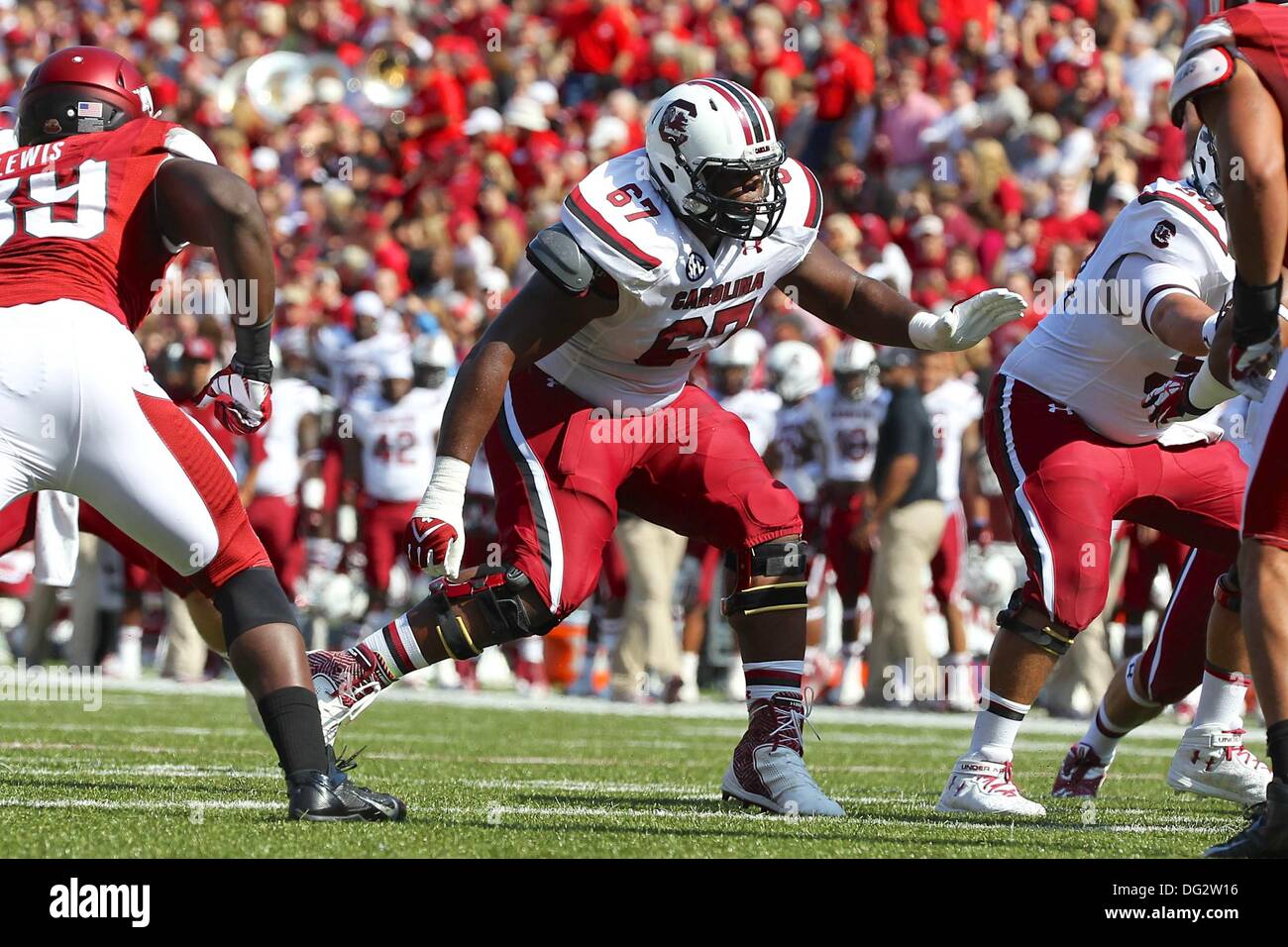
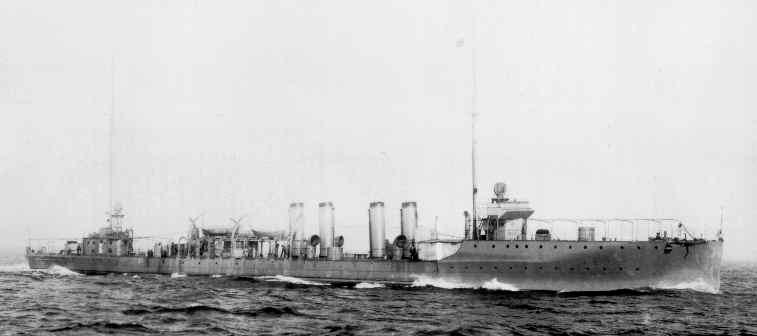
_underway_off_Boston,_Massachusetts_(USA)_on_1_January_1945_(NH_42045).jpg/1280px-USS_Topeka_(CL-67)_underway_off_Boston,_Massachusetts_(USA)_on_1_January_1945_(NH_42045).jpg)
_departs_Naval_Station_Mayport_on_11_November_2003.jpg/1280px-USS_John_F._Kennedy_(CV-67)_departs_Naval_Station_Mayport_on_11_November_2003.jpg)
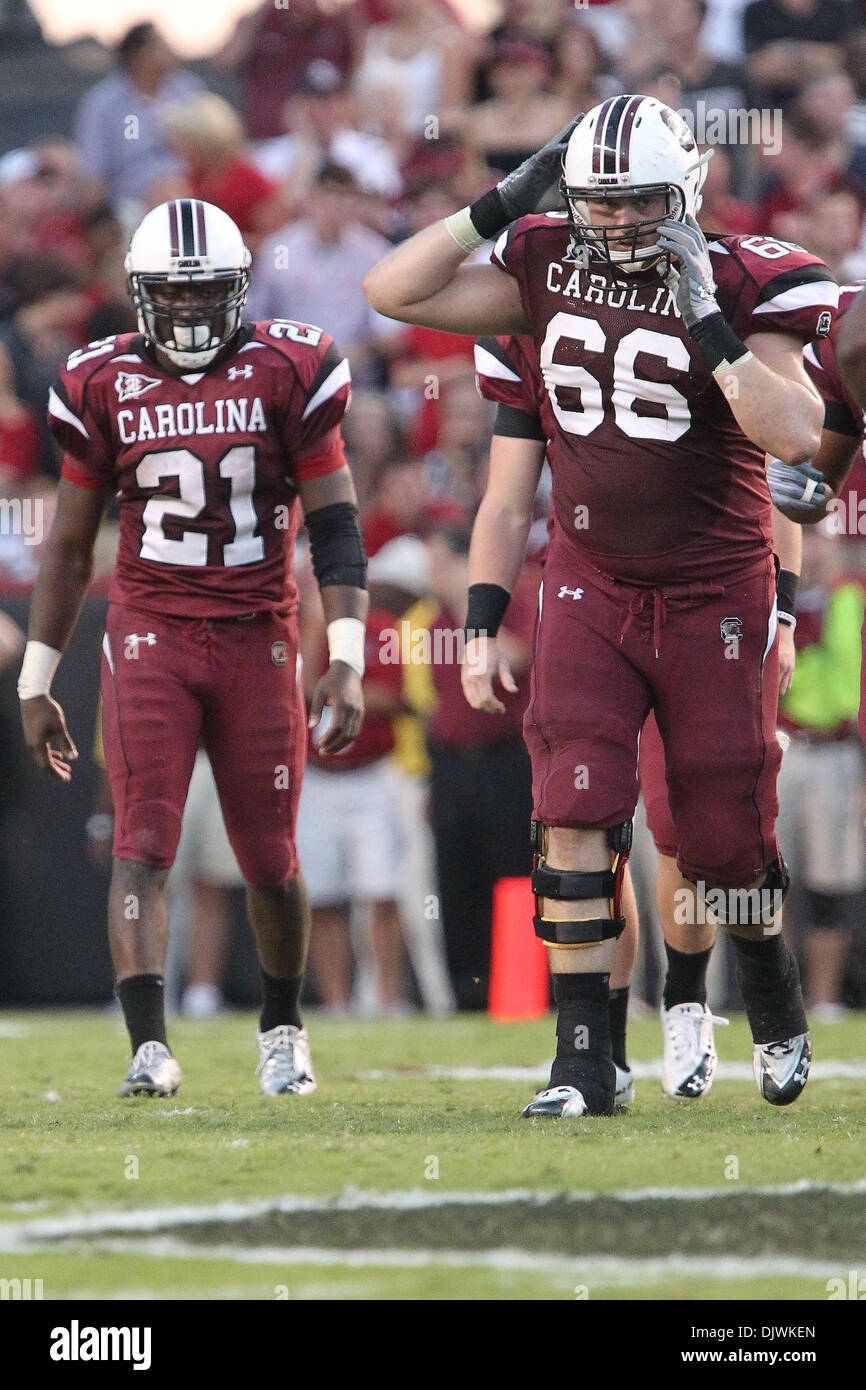


_underway_in_the_Indian_Ocean_on_24_April_1983.jpg/1280px-USS_America_(CV-66)_underway_in_the_Indian_Ocean_on_24_April_1983.jpg)